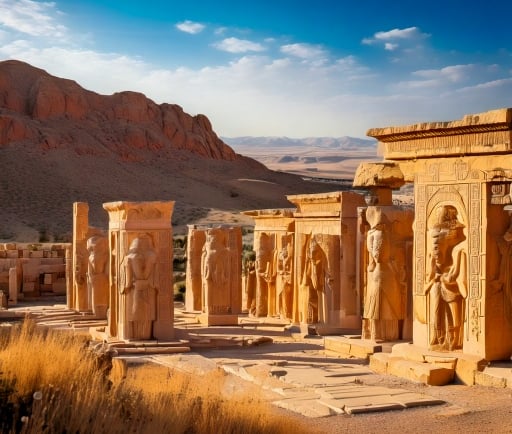Persepolis: A Glimpse into Ancient Persia


Introduction to Persepolis
Persepolis, the ceremonial capital of the Achaemenid Empire, stands as a testament to the architectural brilliance and historical grandeur of ancient Persia. Constructed during the 6th century BCE under the reign of Darius the Great, this archaeological site encapsulates the artistic and cultural zenith of the Persian civilization. It is a place where history whispers through the intricately carved stone, inviting visitors to explore its rich legacy.
The Architectural Wonders
The site of Persepolis is regarded as one of the most extraordinary examples of ancient Near Eastern architecture. Spanning over 125,000 square meters, its vast terraces and monumental staircases were purposefully designed to impress visitors from across the territory. The structures at Persepolis, primarily constructed from limestone, showcase a fusion of various influences, notably melding Assyrian, Babylonian, and Elamite styles.
The grandest structure, the Apadana Palace, was used for receptions and ceremonies, adorned with exquisite reliefs depicting subjects from the empire bringing tribute to the king. This palace, like many others at the site, is a crucial reflection of ancient Persian art, where every detail narrates a story of the past.
A Symbol of Power and Heritage
Persepolis served not just as a royal abode but also as a powerful symbol of the Persian Empire's might and cultural heritage. It was here that the empire celebrated its New Year festival, Nowruz, a tradition that continues to be significant in modern Iran. The site also played a crucial role in the administration of an empire that stretched from the Indus Valley in the east to Thrace in the west.
However, the glory of Persepolis was temporarily disrupted in 330 BCE, when it was invaded by Alexander the Great, an event that marks the end of the Achaemenid rule. The site suffered immense destruction during this time, but the remnants of its extensive history continue to captivate historians and archaeologists alike.
Preservation and Legacy
Today, Persepolis is recognized as a UNESCO World Heritage Site, emphasizing the importance of its preservation for future generations. It attracts scholars, historians, and tourists from all over the globe who come to witness the wonders of ancient Persia. Ongoing archaeological efforts aim to uncover more about the complex history and societal structure of this incredible site.
In conclusion, the archaeological marvel of Persepolis is more than just a collection of ruins; it is a narrative of a civilization that blends art, culture, and power. Its existence proclaims the ingenuity of the Achaemenid Empire and continues to inspire awe and wonder in visitors, offering a window into the past that shaped the region’s identity.
